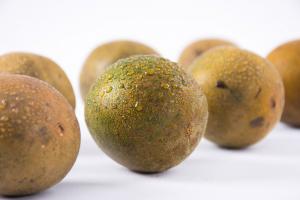What Type of Plant is a Dragon Tree?
The dragon tree, also known as Dracaena, is a type of plant that belongs to the Asparagaceae family. It is a genus of shrubs and trees that are native to the tropical and subtropical regions of Africa, Madagascar, and southern Asia. The dragon tree gets its name from its red sap that resembles dragon's blood. This sap was once used in ancient times for medicinal and ornamental purposes.
Description
The dragon tree has narrow, sword-shaped leaves that grow in a rosette pattern at the top of its stems. Some species of dragon trees have variegated leaves, which means that they have different colors or patterns on them. The leaves can be colored green, yellow, or other shades. The dragon tree also produces small, fragrant flowers that grow on long stalks or panicles. The fruits of the dragon tree are small berries that are edible but not commonly consumed.
Cultivation
Dragon trees are commonly grown as ornamental plants, both indoors and outdoors. They are relatively easy to grow and care for, and can tolerate a range of light and temperature conditions. However, they prefer bright, indirect light and temperatures between 65°F and 80°F. They also require well-draining soil and should be watered only when the top inch of soil is dry.
Dragon trees can be propagated through stem cuttings or by removing suckers from the base of the plant. They can also be grown from seed, although this method is less common. Some popular species of dragon trees include Dracaena marginata, Dracaena fragrans, and Dracaena reflexa.
Uses
Dragon trees have several uses, both historically and in modern times. In ancient times, the red sap of the dragon tree was used for medicinal purposes such as to stop bleeding and for treating skin and digestive problems. It was also used for dyeing fabric and as an ingredient in cosmetics.
Today, dragon trees are mainly grown for their ornamental value. They are popular houseplants because of their ease of care and attractive foliage. They are also used in landscaping and as accent plants. In some parts of the world, the dragon tree is considered a sacred tree and is used in religious ceremonies.
Potential Health Benefits
The dragon tree has several potential health benefits, although more research is needed to confirm these claims. The red sap of the dragon tree contains compounds that have antioxidant and anti-inflammatory properties, which may help protect against certain diseases. Some studies also suggest that dragon tree extracts may have antibacterial, antifungal, and antiviral effects.
Overall, the dragon tree is a fascinating and versatile plant that has been used for centuries for various purposes. Whether grown for ornamental value or for potential health benefits, the dragon tree is a valuable addition to any garden or home.

 how many times do yo...
how many times do yo... how many planted tre...
how many planted tre... how many pine trees ...
how many pine trees ... how many pecan trees...
how many pecan trees... how many plants comp...
how many plants comp... how many plants can ...
how many plants can ... how many plants and ...
how many plants and ... how many pepper plan...
how many pepper plan...






























